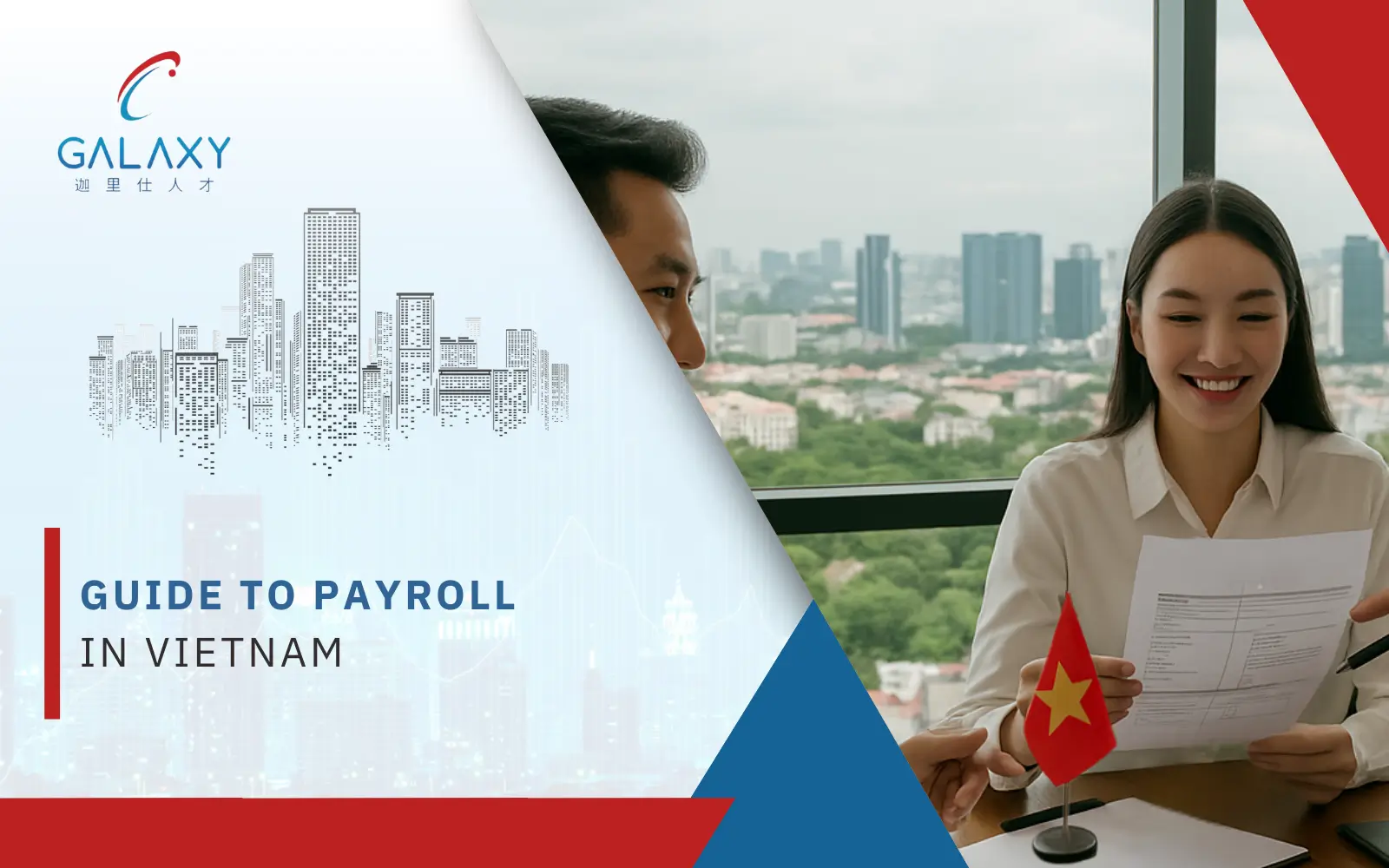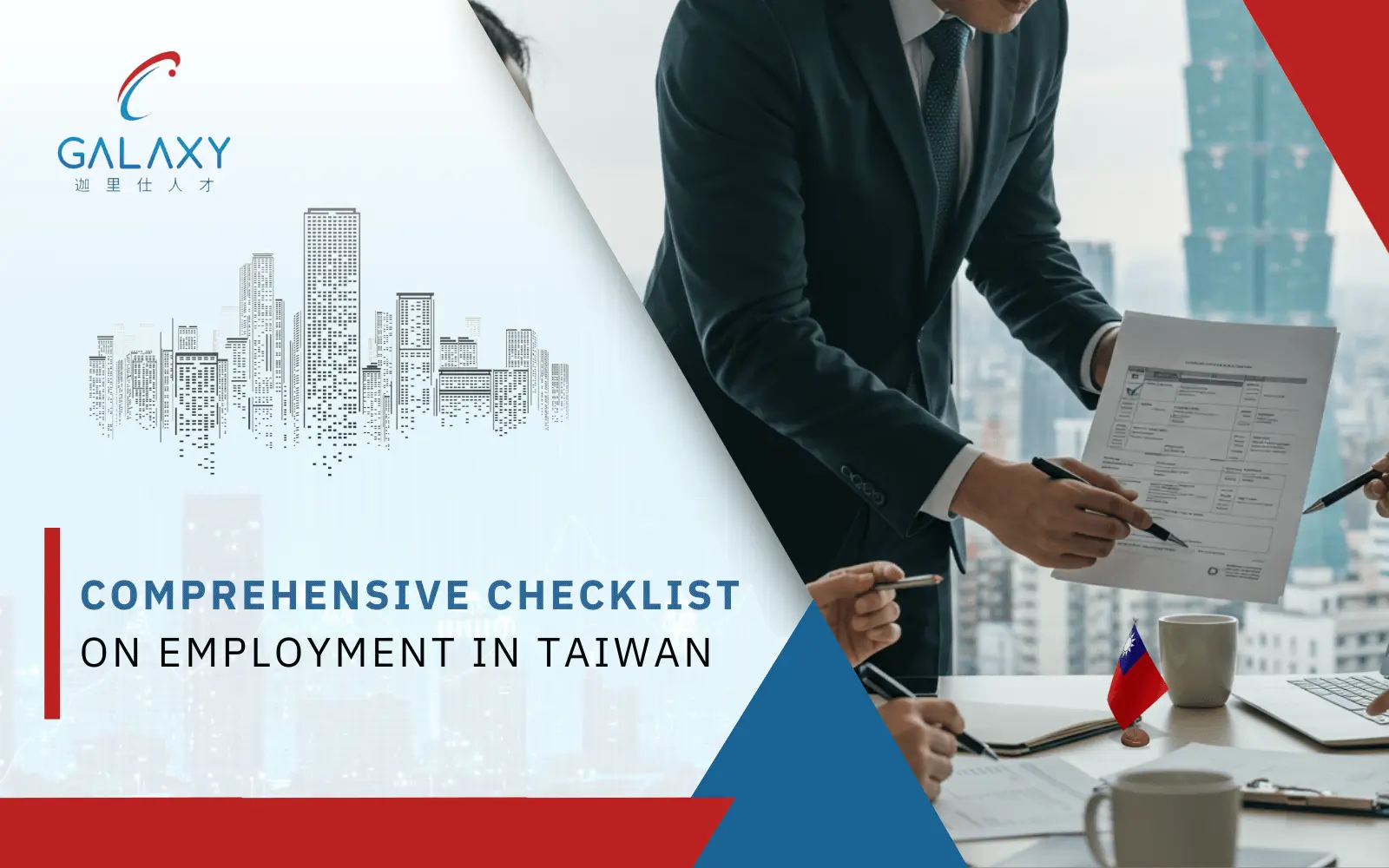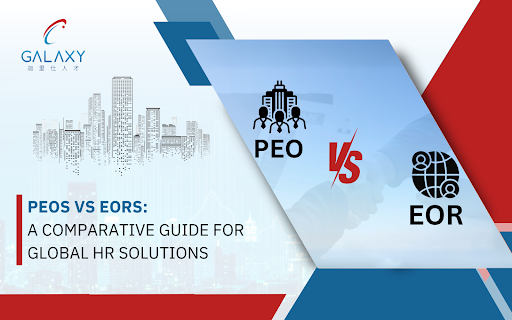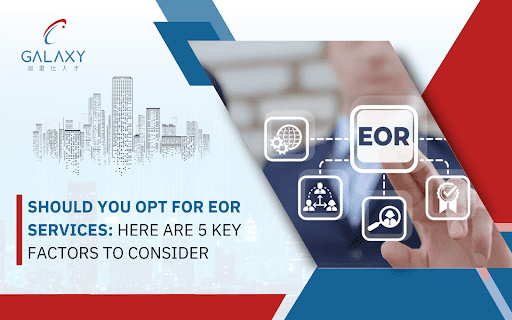Guide to Payroll in Vietnam

Payroll management in Vietnam is a critical function that goes beyond the distribution of monthly salaries. It requires a sound understanding of wage structures, statutory contributions, and local labour regulations to ensure compliance and fairness.
For organisations establishing a presence, expanding teams, or managing a local workforce, effective payroll processes from the outset are essential. Transparent and accurate practices build employee confidence, foster trust, and support organisational efficiency.
This guide outlines the principal aspects of payroll in Vietnam, including minimum wage requirements, salary benchmarks, statutory deductions, reporting obligations, and final settlements. It also considers the advantages of outsourcing payroll, offering businesses a practical means of reducing administrative complexity while maintaining compliance and operational focus.
Table Of Content
- How Payroll Works in Vietnam?
- What Is the Minimum Wage and Average Salary in Vietnam?
- Working Hours, Overtime Pay, and Employer Compliance in Vietnam
- What Are the Employee Deductions and Employer Contributions in Vietnam?
- How Are Payroll Reports, Tax Filings, and Final Settlements Handled in Vietnam?
- What Happens to Payroll During Termination and Final Settlement?
- What are the Best Practices for Compliance and Accuracy for Payroll Services in Vietnam?
- Conclusion
- Frequently Asked Questions
How Payroll Works in Vietnam?
Payroll in Vietnam operates within a structured legal framework that requires employers to comply with social insurance obligations, tax regulations, and labour laws. A well-defined payroll system is essential to ensure accuracy and compliance with these requirements.
Most companies process payroll on a monthly basis, with salaries typically paid by the final working day of the month. In addition to gross wages, payroll calculations must include mandatory deductions for personal income tax, social insurance, health insurance, and unemployment insurance, as stipulated by Vietnamese law.
Here’s what the process usually looks like:
1. Start with the Gross Salary
It begins by calculating each employee’s total earnings—this includes their base salary, fixed allowances, overtime, and any bonuses agreed upon in the contract.
2. Apply Employee Deductions
Next, certain mandatory deductions are made from the employee’s salary. These usually cover:
- Social Insurance
- Health Insurance
- Unemployment Insurance
- Personal Income Tax
The rates are set by the government and need to be reported and paid monthly.
3. Add Employer Contributions
Additionally, employers are required to contribute to the same insurance schemes on behalf of their employees. These costs are separate from what is deducted from the salary.
4. Issue Payslips
Once deductions are done, employees receive a payslip with a breakdown of gross pay, deductions, and net pay. This step keeps things transparent and helps avoid confusion.
5. Submit Reports
Companies must regularly report payroll data to tax and insurance authorities. There’s also an annual income tax reconciliation, especially for employees with changing or multiple income sources.
6. Stay Updated on Regulations
Payroll regulations in Vietnam are subject to frequent and sometimes unexpected changes. For businesses—especially those newly entering the market—it is essential to remain vigilant and up to date to avoid compliance risks.
What Is the Minimum Wage and Average Salary in Vietnam?
Minimum Wage in Vietnam
Vietnam’s minimum wage structure is divided into two main categories:
1. Common Minimum Wage
- This is set at VND 2,340,000 (approximately US$93) and is used to calculate salaries for employees in state-owned organisations and enterprises. It also forms the basis for calculating social insurance contributions for all enterprises (with the maximum social contribution set at 20 times the standard minimum wage).
2. Regional Minimum Wage
- Employees of non-state businesses are subject to the regional minimum wage, which is determined by four regions designated by the government. Following a two-year freeze in spite of inflation, these were raised by 6% beginning in July 2024. The updated prices are:
| Region | 2022 Minimum (VND) | 2022 Minimum (US$) | 2024 Minimum (VND) | 2024 Minimum (US$) |
|---|---|---|---|---|
| Region I | 4,680,000 | 192 | 4,960,000 | 196 |
| Region II | 4,160,000 | 171 | 4,410,000 | 175 |
| Region III | 3,640,000 | 150 | 3,860,000 | 153 |
| Region IV | 3,250,000 | 134 | 3,450,000 | 137 |
3. Hourly Minimum Wages (by region, July 2024):
- Region I: VND 23,800 (US$0.94)
- Region II: VND 21,200 (US$0.84)
- Region III: VND 18,600 (US$0.74)
- Region IV: VND 16,600 (US$0.66)
Average Salary in Vietnam
Depending on the sector, region, and degree of experience, salaries in Vietnam can differ significantly. Although there isn’t a set national average, the following are essential things to remember:
By Region
| Location | Monthly Average Salary (VND) | Equivalent in USD | Notable Insights |
|---|---|---|---|
| Hanoi & Ho Chi Minh City | 10,500,000 – 18,000,000 | $415 – $710 | Salaries are significantly higher in these tier-1 cities, especially in sectors like tech, finance, and real estate. |
| Secondary Cities (e.g. Da Nang, Hai Phong) | 8,000,000 – 12,000,000 | $316 – $474 | Slightly lower cost of living leads to more moderate pay, but strong growth in logistics and tourism. |
By Sector
| Sector | Monthly Average Salary (VND) | Equivalent in USD | Talent Market Insights |
|---|---|---|---|
| Information Technology | 20,000,000 – 35,000,000 | $790 – $1,380 | There is a high demand for skilled developers and tech engineers. |
| Manufacturing & Logistics | 9,000,000 – 15,000,000 | $355 – $590 | One of the largest employment sectors is characterised by steady wage growth. |
| Hospitality & Retail | 6,000,000 – 10,000,000 | $236 – $395 | Entry-level dominated; seasonal wage fluctuations are common. |
| Accounting & Finance | 10,000,000 – 18,000,000 | $395 – $710 | Competitive salaries, especially in international or regional firms. |
Key Takeaways for Employers
- The Vietnamese government has established a strictly regulated wage system.
- Employers must adhere to region-specific minimum wage requirements, irrespective of the frequency of payment.
- While compliance is mandatory, offering wages above the legal minimum is often necessary to attract and retain skilled employees.
- Payroll calculations must consider factors such as regional wage levels, job role, and statutory contributions including health and social insurance.
Working Hours, Overtime Pay, and Employer Compliance in Vietnam
Standard Working Hours
| Category | Details |
|---|---|
| Normal Working Hours | Up to 8 hours per day, 48 hours per week |
| Shortened Working Week | Common in sectors involving dangerous or hazardous conditions; typically 6–7 hours/day |
| Flexible Arrangements | Allowed if agreed upon in employment contracts, ensuring total hours don’t exceed weekly or monthly caps |
Overtime Pay Regulations
Vietnam enforces strict regulations on overtime to protect employee welfare. The framework operates as follows:
| Overtime Scenario | Overtime Rate (as % of Base Hourly Wage) |
|---|---|
| Weekdays (Normal Working Days) | 150% |
| Weekends (Saturday/Sunday) | 200% |
| Public Holidays or Paid Leave Days | 300% |
| Night Shift Overtime (any day) | An additional 20% on top of the applicable rate |
1. Daily cap: Overtime must not exceed 12 hours/day
2. Monthly cap: Overtime must not exceed 40 hours/month
3. Annual cap: Overtime must not exceed 300 hours/year for most sectors (expanded from 200 hours under recent law)
Employer Compliance: Key Requirements in Vietnam
1. Clearly define employment terms
All contracts must include working hours, rest periods, and overtime terms in writing.
2. Maintain accurate timekeeping records
Employers must track daily attendance, working hours, and all overtime performed.
3. Obtain written consent for overtime
Overtime requires the employee’s written consent, unless it’s an emergency.
4. Mandatory rest periods
Workers must receive at least one full 24-hour break every 7 consecutive working days.
5. Breaks during long shifts
Employees working 6+ continuous hours must get a minimum 30-minute break.
6. Health & safety precautions
Employers must conduct health and safety checks before assigning overtime in hazardous work conditions.
Penalties for Non-Compliance
Non-compliance with regulations on working hours and overtime may lead to:
1. Administrative fines ranging from VND 2 million to 75 million (approx. USD 80–3,000)
2. Temporary suspension of business operations in severe cases
3. Mandatory back payment of underpaid wages with interest
Strategic Insight for Employers
For organisations managing teams in Vietnam—particularly those with shift-based operations or expanding workforces—several practical measures can enhance payroll accuracy and compliance:
1. Implement automated payroll and attendance systems to minimise manual errors.
2. Ensure employment contracts are updated in line with the latest legal requirements.
3. Provide regular compliance training for HR personnel and line managers.
4. Engage local payroll or HR specialists to navigate regulatory obligations more effectively.
What Are the Employee Deductions and Employer
Contributions in Vietnam?
Under the Labour Code and social insurance regulations, both employer and employee salary deductions must be taken into account when managing payroll in Vietnam. These deductions apply universally, irrespective of industry or company size.
Employee Salary Deductions:
Employees in Vietnam typically see deductions for three main types of compulsory insurance:
1. Social Insurance (SI): 8%
2. Health Insurance (HI): 1.5%
3. Unemployment Insurance (UI): 1%
These are deducted directly from the employee’s gross monthly salary.
Employer Contributions:
In addition to employee deductions, employers are legally required to contribute a larger share toward the same insurance categories, along with other funds:
1. Social Insurance: 17.5%
2. Health Insurance: 3%
3. Unemployment Insurance: 1%
4. Occupational Accident and Disease Fund: 0.5%
5. Trade Union Fee (if applicable): 2% (based on company policy or union presence)
Altogether, this brings the total employer contribution to approximately 22% of each employee’s salary.
Important Note on Salary Basis
While the government sets clear caps, contribution amounts are determined by an employee’s monthly salary. Social and health insurance contributions are capped at 20 times the basic salary, whereas unemployment insurance is calculated up to 20 times the regional minimum wage. These limits ensure the system remains fair and manageable for both employers and employees.
Key Insight
Maintaining payroll compliance in Vietnam requires close attention to changes in wage levels, contribution ceilings, and insurance regulations, many of which are subject to annual revision. Accurate calculations and timely submissions are essential to avoid penalties.
For organisations with expanding teams or cross-border operations, engaging professional payroll services in Vietnam can streamline compliance, reporting, and overall workforce management.
How Are Payroll Reports, Tax Filings, and Final Settlements Handled in Vietnam?
Processing monthly salaries is only one element of payroll management in Vietnam. Employers must also comply with government requirements relating to taxation, payroll reporting, and employee terminations. The key obligations are summarised below:
1. Monthly Payroll Reports
- Companies prepare detailed monthly reports showing employee earnings, deductions (like tax and insurance), and net salaries.
- These records should be accurate and well-maintained, as local authorities may request them during audits.
2. Filing Personal Income Tax (PIT)
- Employers are responsible for declaring and paying PIT on behalf of employees.
- Filing frequency, whether monthly or quarterly, depends on the size of the business.
- At the same time, employers must submit social, health, and unemployment insurance contributions.
3. Year-End Tax Finalisation
- At the close of each financial year, a reconciliation process ensures the correct amount of tax has been paid.
- Employers submit a final PIT report and issue a form to employees for personal tax records or refunds.
4. Final Settlements When Employees Leave
- Businesses must calculate and disburse outstanding amounts such as unpaid salary, bonuses, or leave encashments.
- PIT is finalised, and social insurance records are updated or closed.
- This process is generally completed within 7 working days from the employee’s last day.
5. Staying Updated
- Vietnam’s payroll regulations are revised frequently.
- Many businesses choose to work with payroll service providers to ensure ongoing compliance and reduce administrative risk.
What Happens to Payroll During Termination and Final Settlement?
In Vietnam, employers are required by the Labour Code to complete all payroll settlements within 14 working days of an employee’s final day of service. This obligation applies irrespective of the reason for separation—whether resignation, termination, or contract expiry—and ensures fairness and transparency in the termination process.
The final payroll generally includes:
1. Unpaid salary for the days worked up to the departure date
2. Payment for unused annual leave, based on the remaining balance
3. Severance pay, if the employee has completed at least 12 months of service and the termination was not due to misconduct
4. Any pending bonuses or allowances that were contractually agreed upon
5. Statutory deductions, including personal income tax and social insurance contributions
Employers must ensure that all documentation is completed correctly, records are accurate, and the final payment is clearly communicated to the departing employee. Effective management of termination settlements not only upholds legal compliance but also reflects respect for the individual and helps protect the organisation’s reputation.
What are the Best Practices for Compliance and Accuracy for Payroll Services in Vietnam?
Payroll in Vietnam extends beyond salary disbursement; it demands strict adherence to legal and regulatory requirements to maintain smooth business operations. Key practices include:
1. Monitoring updates to wage, tax, and insurance regulations
2. Selecting an appropriate payroll system, whether in-house or outsourced
3. Maintaining organised documentation of contracts, salaries, and tax filings
4. Meeting all tax and insurance deadlines to avoid penalties
5. Centralising employee data for efficient management of leave, bonuses, and deductions
6. Processing final settlements for departing employees within seven working days
7. Engaging local payroll experts to navigate Vietnam’s complex requirements and maintain compliance.
Also Read : Payroll Outsourcing: A Cost-Effective Solution For Employers
conclusion
Managing payroll in Vietnam goes beyond calculations; it requires close attention to contribution ceilings, reporting obligations, and labour law compliance. These responsibilities not only safeguard legal conformity but also shape the employee experience and support smooth business operations.
As organisations expand in Vietnam, sustaining payroll compliance becomes increasingly important. It mitigates legal risks, strengthens employee trust, and underpins long-term stability. However, keeping pace with evolving regulations and local requirements can be complex without specialist support.
Galaxy Group offers practical, on-the-ground expertise to simplify payroll management. From initial setup through to business expansion, our team ensures compliance remains aligned with organisational objectives—enabling companies to concentrate on growth and people, while we manage the complexities behind the scenes.
Stay Compliant with Vietnam’s Payroll Regulations
Get insights on Vietnam’s 2025 payroll laws, wage updates, and compliance essentials to stay on track.
FAQ’S
What is the payroll system in Vietnam?
The payroll system in Vietnam handles social insurance contributions, tax deductions, and salary computation. Employers must follow laws pertaining to minimum wages and reporting deadlines. To effectively manage compliance, many businesses use local payroll services.
How do salaries work in Vietnam?
In Vietnam, salaries are typically paid on a monthly basis and are subject to the government-mandated minimum wage. Additionally, employers manage unemployment insurance, social insurance, health insurance, and personal income tax deductions. The majority of companies adhere to a defined framework to guarantee that workers are paid on time and in compliance.
Is 13th-month pay mandatory in Vietnam?
No, the law in Vietnam does not require 13th-month pay. Nonetheless, it is a typical custom, particularly during Tết, the Lunar New Year. Numerous employers provide it as a bonus in accordance with employee contributions or business performance, or as stipulated in employment contracts or internal policies. It becomes a legally binding obligation if it is expressly mentioned in the contract or company policies.
Do foreign companies need to set up a local entity to run payroll in Vietnam?
Not always. Establishing a complete legal entity can seem like a big step if you’re just getting started or testing the waters. For this reason, many businesses choose to partner with an Employer of Record (EOR) or a local payroll provider. It’s a sensible approach to maintain compliance and appropriately compensate your staff without becoming bogged down in time-consuming paperwork and registrations.
What are the standard working hours in Vietnam?
The standard workweek is 48 hours, typically spread across six days. Overtime is allowed but must follow labour law guidelines.






